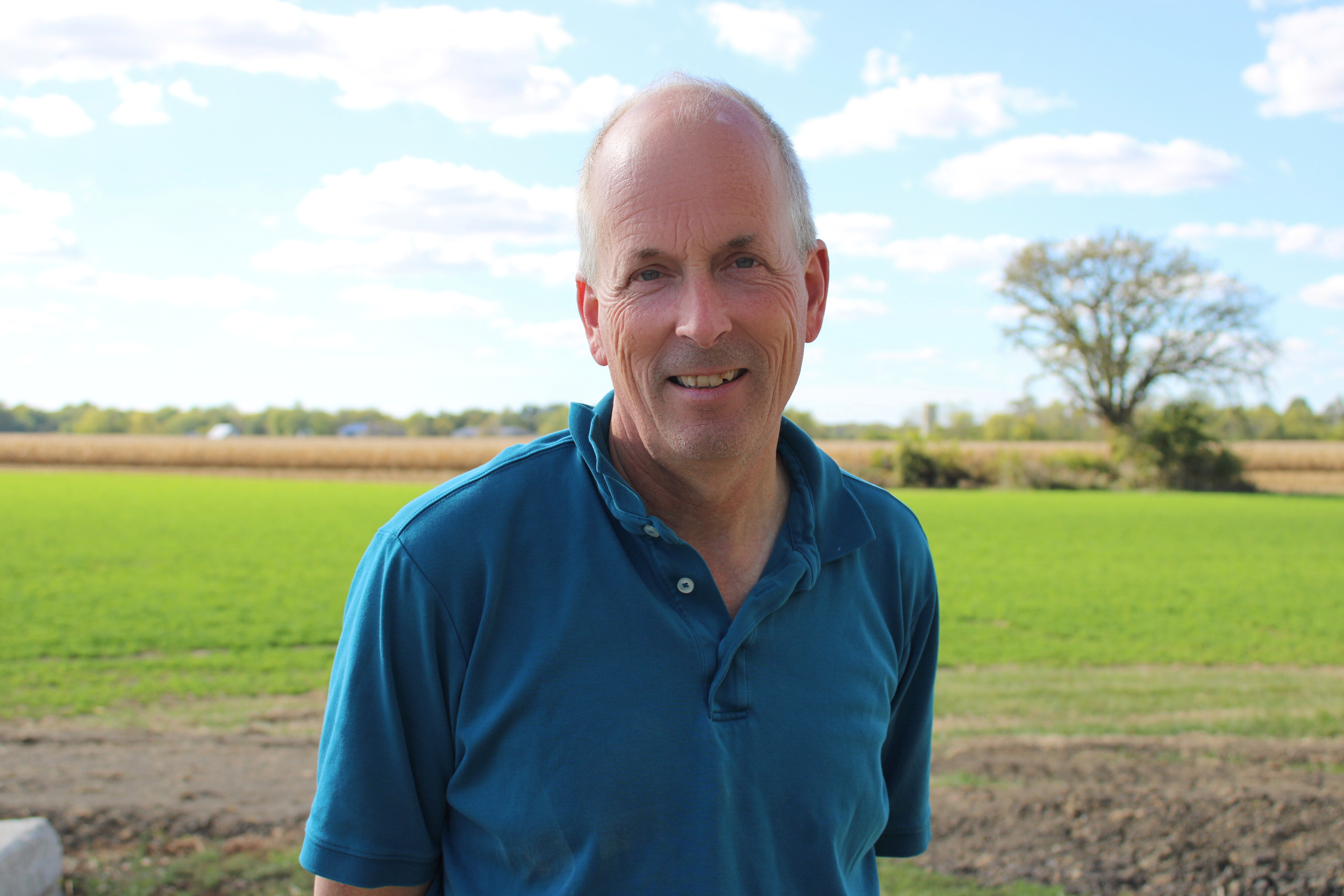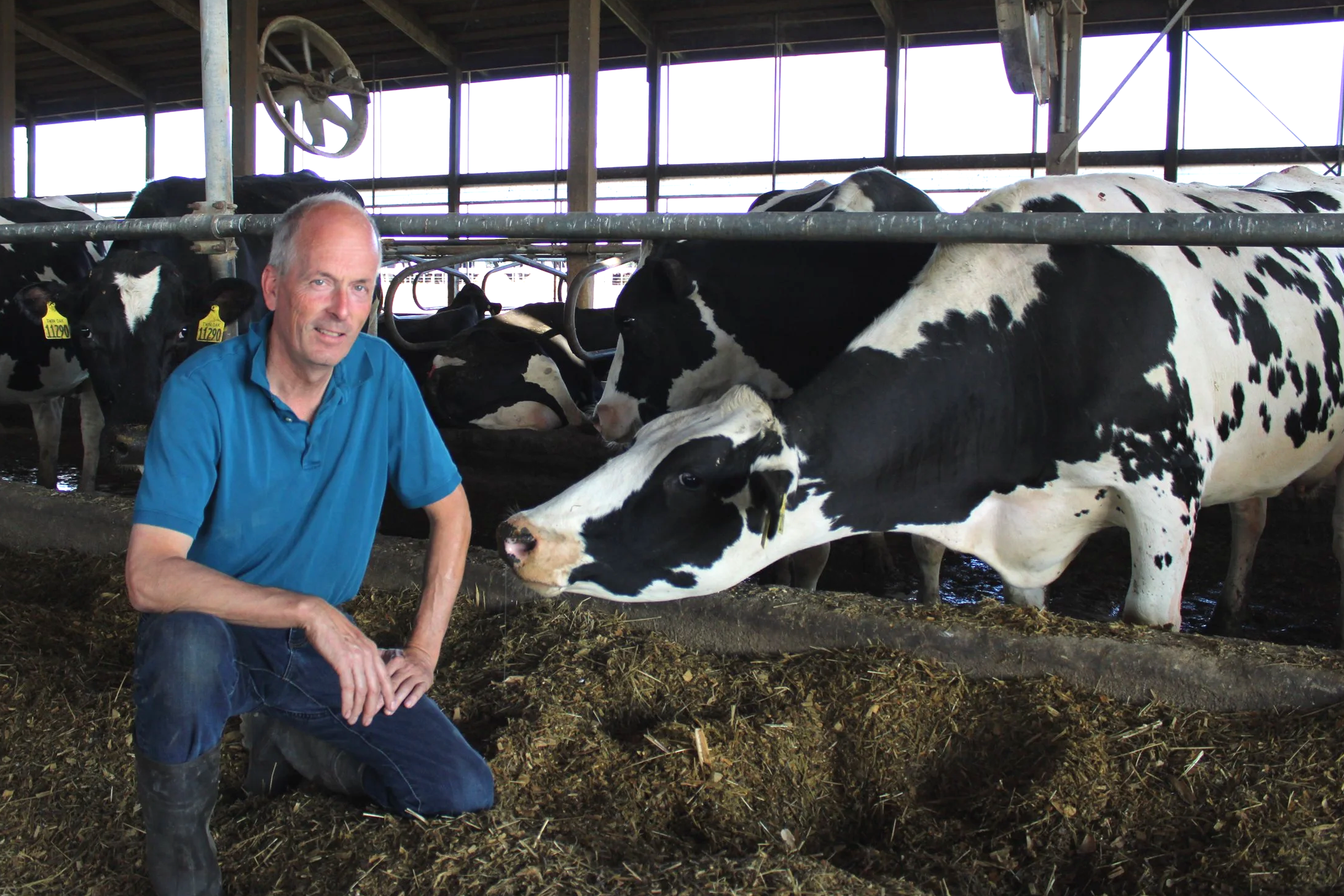How Our Produce Scraps are Recycled at Ohio-Based Twin Oaks Dairy Farm
Tucked down a long gravel drive in the small town of South Solon, Ohio, Twin Oaks Dairy Farm blends seamlessly into the rolling fields and quiet charm of rural Ohio. Teun Verhoeven, who immigrated to America from the Netherlands in 2002 with his wife and two young sons, founded Twin Oaks Dairy Farm with 700 cows and a single barn.
Since then, Twin Oaks has grown substantially. Today, the farm employs 35 full-time team members, boasts two feed centers, milks 1,400 cows twice a day, and is currently undergoing construction to support an additional 300 cows. In 2020, Teun expanded operations to a second location in Mount Sterling, Ohio, which now houses 1,000 cows milked three times daily.
Our team was eager to meet Teun, whose partnership has helped our company recycle scraps of produce unfit for human consumption, like pineapple skin or watermelon rinds, into feed for his cattle. We were deeply impressed by the scale and sophistication of Teun’s operation and excited to see firsthand how DNO’s small contribution of produce scraps supports the larger, intricate, and scientifically precise ecosystem of his ever-expanding farm.
Sitting next to the pile of produce scraps from DNO are large silage stacks of items necessary to a cow’s diet, such as corn solids, hay, alfalfa, grass, high-protein byproducts from high fructose corn syrup, and more. With a smile, Teun led our team to a giant and colorful mound of un-packaged gummy bears (yes, gummy bears!) sweating in the sun next to the silage. Teun explained that he receives these gummy bears from manufacturers who can’t sell their initial test batches from early runs used to check color and flavor consistency before commercial production begins. Since cows have extremely high energy demands (he compares it to the energy needs of a person running a marathon every day) these fruit snacks serve as an efficient energy source, being roughly 70% sugar.
“The more energy dense you can make it the better it is… a little bit of starch, some fat, some high-digestible fiber like what DNO provides, and sugar,” he explains.
As we made our way through long rows of curious cows and towering silage piles, Teun explained that Twin Oaks Dairy Farm qualifies as a Concentrated Animal Feeding Operation (CAFO), and with that designation comes a host of environmental regulations designed to protect surrounding land and waterways. For instance, he is required to track how much manure his farm produces to ensure it is not over-applied to the crops that populate his property year-round, helping to prevent runoff.
Throughout the tour, Teun was accompanied by his tail-wagging canine companions who follow him everywhere, but the care that he shows his animals is not only reflected by his pets but the calm and gentle demeanor of his livestock. Sitting beside one of the large cows, Teun extended his hand to demonstrate their friendliness, noting that such trust is earned only through consistent good treatment. He observes his employees closely, watching how the cows respond to each. If any animal appears uneasy, Teun makes it a priority to understand why.
At the very end of the cow’s life, Teun allows the animal to be sold for meat, however he is quick to address a misconception he’s heard many times: “The story that people say that we try to burn cows up—or use them so hard for milk production that they die very young—is not true.”
He went on to explain that it costs about $2,300 to raise a calf until she calves at 24 months of age. For that reason, keeping cows healthy and productive for as long as possible makes the investment more worthwhile. As he put it, “an older cow simply produces more milk than a younger one.” During her first lactation, a cow produces only about 70% of the milk that a mature, six- or seven-year-old cow can provide.
It’s just Teun and his wife living on the farm now, though their life is far from quiet. From the backyard of their home, you can see over the fence to a neighboring pasture where more cows graze. Teun shared that he’s close with his neighbor, who raises cattle for beef. Then, there are his own cows and the workers hired to help take care of them. Each morning, they ensure the herd is fed right on schedule at exactly 5 a.m. Maintaining that consistency, Teun explained, helps give the cows a sense of routine and security. And beyond the people, cows, and loyal farm dogs, there’s even more company! Teun estimates about fifteen stray cats call Twin Oaks home, too, and handily serve as “rodent control.” Since calves subsist on a diet of milk, it’s no surprise the cats prefer to linger near the calf barn, hoping to catch a few stray droplets for themselves. It’s, without question, the most adorable spot on the farm.
This barn is where all cows go two weeks before “calving,” or giving birth, at the farm. Admiring a calf that was just a half an hour old at the time, our team inquired about the mother cow who, just a few feet away, was alternating between eating and “mooing” at them. Teun described how the set-up of the barn intentionally mimics the natural behavior of a cow and her baby calf if they were in a pasture.
“Cows live in herds. They’re always in a group together,” he explained. “When she has a baby calf, then she goes away from the herd because she becomes a risk for the herd. She
has the baby calf alone. Then she licks the calf dry, and she tries to hide it in the long grass. Then she walks away from the calf and starts eating. That’s exactly what we’re doing here. She can see the calf from out of the corner of her eye while she is eating, so we are trying to mimic that behavior.”
It isn’t unusual for Twin Oaks to be home to 20-25 calves at a time, which isn’t surprising considering the average lifespan of a dairy cow is about 6 years or 4 lactations. The tag on the ear of the baby calf indicated that this was Teun’s 15,670th cow to join the dairy farm since he started back in 2002.
“Dutch people are mostly in the dairy business,” Teun reflects when asked about his career choice.
His reason for coming to Ohio? It’s simply less crowded. Coming from a country as densely populated as the Netherlands, he appreciates the open fields and sense of possibility that rural Ohio provides. “The United States has 9.4 million dairy cows,” he noted, “while the Netherlands has just 1.7 million in a space one-third the size of Ohio, with 17 million people, 200 million chickens, and 10 million hogs.” Here, surrounded by quiet pastures and good company, Teun has created two successful dairy farm operations rooted in care, precision, and the simple joy of peaceful open space that rural Ohio provides.
We are so grateful to Teun for giving us the space and opportunity to put our produce scraps to use and severely cut down on food waste. Sustainability is a driving value in the everyday operations at FRESHEALTH and DNO Produce, from our wash systems that allow us to filter and recirculate wash water, to our elimination of single-use packaging in our FRESHEALTH line, to our involvement in the USDA’s Local Food Purchasing Agreement that allows us to distribute over 103,400 pounds of Ohio-grown produce while cutting down on CO2 emissions, to this partnership with Twin Oaks Dairy Farm. In 2024 alone, we diverted 375 tons of produce scraps from the landfill, and we have no plans on slowing down! So next time you’re munching on our fresh pineapple spears or cantaloupe chunks, know that every part of that fruit is being used for nourishment!





